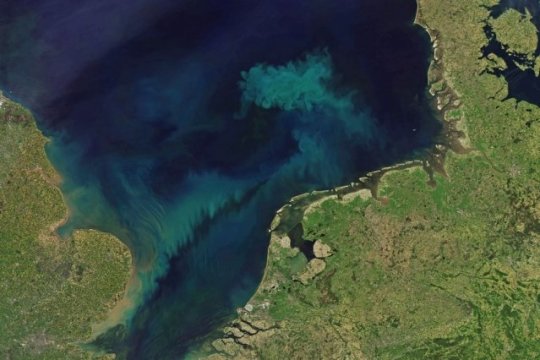The head of the Ministry of Environment and Natural Resources (SEMARNAT), Josefa González Blanco Ortíz, held a meeting with the president of The Ocean Foundation, Mark J. Spalding, with the aim of delineating a common strategy to deal with acidification of the oceans and safeguard the marine protected natural areas of Mexico.

For his part, Mark J. Spalding commented on his Twitter account that it was an honor to meet with the head environmental officer for the country, and to talk about strategies for addressing ocean acidification.
The Ocean Foundation is a community foundation that aims to support and promote those organizations dedicated to reverse the trend of the destruction of the oceans around the world.
The color of the ocean will change by the end of the century.
Global warming is altering the phytoplankton in the world’s oceans, which will affect the color of the ocean, increasing its blue and green regions, these changes are expected by the end of the century.
According to a new study by the Massachusetts Institute of Technology (MIT), satellites must detect these changes in tone, and thus provide an early warning of large-scale changes in marine ecosystems.
In an article called Nature Communications, researchers report the development of a global model that simulates the growth and interaction of different species of phytoplankton or algae, and how the mixing of species in several places will change as temperatures increase throughout the planet.
The researchers also simulated how phytoplankton absorb and reflect light and how the color of the ocean changes as global warming affects the composition of phytoplankton communities.
This work suggests that blue regions, such as subtropics, will become even bluer, reflecting even less phytoplankton and life in general in these waters, compared to the current ones.
And in some regions that are greener today, they can become greener, as warmer temperatures produce large blooms of more diverse phytoplankton.

Stephanie Dutkiewicz, a research scientist in the Department of Earth, Atmospheric and Planetary Sciences at MIT and the Joint Program on the Science and Policy of Global Change, commented that climate change is already changing the composition of phytoplankton, and as a consequence, the color of the oceans.
At the end of this century, the blue color of our planet will be visibly altered.
The MIT scientist said there will be a noticeable difference in the color of 50 percent of the ocean and that it could be potentially very serious.
With information from La Jornada, Twitter @Josefa_GBOM and @MarkJSpalding
Photos: NASA Earth Observatory taken from sciencedaily.com and @Josefa_GBOM







